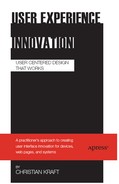Characteristics of a Successful First Impression
A user experience design with a successful first impression is characterized by a number of elements. These are described in the sections to follow.
Inviting and Simple
If you are designing a website, you want to make the initial front page inviting yet simple. You want to make the front page look professional and have a great design, but at the same time you want to give the users a good overview of what you are offering. But you also want to focus on the most-visited subpages (remember that if the user enters your website through a search engine, then she will most likely skip past your front page).
If you are designing a device, you want to make unpacking the device an easy and pleasant experience, as in Figure 10-2. You also want to make sure that the device is ready to use, without, for example, the user having to charge the device for a long time. You also want to make sure that the user can immediately start using the core tasks of the device.

Figure 10-2. The out-of-the-box experience is a key part of the first impression for devices and similar products.
If you are designing a piece of software, you want the start-up of your software to be fast, and the initial setup to be extremely easy. You also want to make sure that the installation is trouble free or even contains positive surprises (or wow).
In the train ticket machine example, you want to place the ticket machine in the right location; the physical design as well as the first screen should invite the users to use the machine. The right location may be next to the ticket counters, but it may also be inside the train, thereby avoiding the need for the user to ever miss his train due to buying a ticket.
Free of Pain Points
You want to remove all pain points from the initial use of your product. A good first impression is one that is free of pain. Apple, for example, is noted for the care they take in the packaging of their products, making even the unboxing experience into a wow event.
If your current website uses a Flash intro that for some users takes more than ten seconds or even minutes to load, you will surely need to fix that. You also want to look at how easy it is to get an overview of your website and how easy it is to find the core tasks.
If you are designing a device, you want to reduce or remove hurdles such as difficult unpacking and insertion of batteries. You want to avoid asking questions during start-up of the device, and so forth.
If you are designing a software package, then you want to avoid long and difficult-to-understand questionnaires and setup procedures before getting to the core of what your software can do. You certainly also want to look at removing pain points from the process of installing your software.
In the case of the train ticket machine, you want to remove any barriers that are preventing users from using the machine, such as where to find it, how to get started, how to choose language, and so on.
Core Tasks Are at the Center
The next things you should look at are the core tasks of your product. You want to make sure that when the user starts using your product, he can easily and quickly perform the core tasks.
If you are designing a website, you probably want to place the target users’ core tasks right on the front page. If you are designing a low-cost mobile phone, you will want to lead the user directly to a place where he can perform core tasks like making a phone call, writing SMS, and so on.
In the case of the train ticket machine, you will have to look at whether the initial screen allows the user to immediately start his core task of purchasing a train ticket. You will also look at whether the user can perform the task of buying a train ticket for his desired destination in a shorter time and with a better experience than waiting in the queue for the counter.
Provide a Wow Factor
Adding positive surprises is another way to improve the first impression that the user gets of your product. Positive surprises can be many things, as you will learn in the next chapter. Positive surprises contribute mightily to a good first impression.
In the train ticket machine example, a positive surprise could be that the machine—based on, for example, face recognition or detection of your credit card—will suggest the purchase of a ticket to the same destination as the last time you rode. It might also remember which travel class you prefer to use, and so forth.
